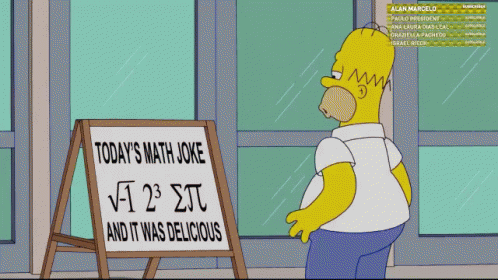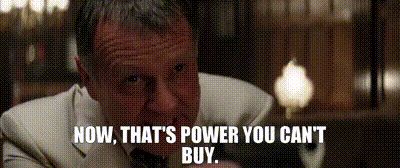Q
Anonymous asked:
As a game developer, what are your thoughts on "pay to win" mechanics (I.E. being able to buy more "power" in a game, particularly multiplayer ones, with money), both in business terms and in "fun" terms. Based on your "flow" graphs, it seems it would be a bad idea overall as the players facing pay to win players would fall into frustration area while those buying power would rise into the boredom area.
A
These sort of paying/nonpaying issues are typically ironed out by the multiplayer game’s matchmaking system. Players often (mistakenly) think that matchmaking only considers player skill when distributing players into games. If player power (such as gear, level, paid or earned boosts, etc.) is a factor, I guarantee you that the matchmaking algorithm will take it into account because we don’t actually want lopsided games - if we pit teams of equal skill against each other but one team has much higher player power level than the other, then the game will be a curbstomp. We actively want to avoid this - curbstomp games are both frustrating for those getting stomped and boring for those who are doing the stomping.
The actual goal of the matchmaking system is generally to even out player power and player skill on both teams. Our rough formula often looks something like this:
[Player Skill] + [Earned Player Power] + [Paid Player Power] = [Total Player Power]
Equally geared players who have paid boosts but are lacking in player skill, for example, would probably get crushed by a significantly more skilled or geared player without those boosts. A mediocre skilled but well-geared player can ride lots of paid boosts higher, but will still hit that ceiling of highly skilled players, some of whom might occasionally pay for stuff they like. As long as our metrics can measure player skill well enough (and we generally get it right after a few games to calibrate), the matchmaking algorithm usually does a pretty good job of setting up reasonable multiplayer games. This does mean that the upper ceiling on total player power does include paid player power after skill and earnable player power have hit their own upper limits, but this is also only at the very highest skill levels in general.
This is where the idea of “pay to win” tends to break down - there comes a point where players can’t actually guarantee a win by paying more, they can only increase their player power. At best, their Total Player Power will increase due to the paid boosts, but they’ll get eventually sorted by the matchmaking system and reach equilibrium for their new Total Player Power level. In the vast majority of games where players can buy power, there’s still an upper limit on the power a player can buy or earn. When they hit that limit, then the only recourse is raising their skill level. This is, for example, why nobody can win competitive Magic: The Gathering tournaments by buying the most expensive cards. Even if a player owns every card, they still need the skill to construct a good deck from that card pool and make the right in-game decisions to pilot that deck to victory. While some exceptions exist, this does tend to be the general rule when it comes to selling power. Since one major goal of matchmaking is to reduce the frequency of lopsided games in favor of closer games, our matchmaking and ranking systems are designed to take paid power into account. Our games might not always hit this goal, but it isn’t usually due to malice so much as flaws in our matchmaking and ranking systems.
[Join us on Discord] and/or [Support us on Patreon]
The FANTa Project is being rebooted. [What is the FANTa project?]
Got a burning question you want answered?
- Short questions: Ask a Game Dev on Twitter
- Long questions: Ask a Game Dev on Tumblr
- Frequent Questions: The FAQ
Notes
 brandonvout liked this
brandonvout liked this in-mutual-weirdness liked this
 richardtrevisani liked this
richardtrevisani liked this cyrusoeriahi liked this
supercomputer276 reblogged this from askagamedev
depravedhomosexual reblogged this from askagamedev
arbi-d liked this
isayoldbean liked this
 wowstuff liked this
wowstuff liked this  tidesages liked this
tidesages liked this xennyboy reblogged this from askagamedev
ursopanda liked this
vimlos liked this
benevolentwanderer liked this
starwers liked this
auttoton liked this
 askagamedev reblogged this from askagamedev
askagamedev reblogged this from askagamedev mrbity reblogged this from askagamedev
 wertercatt liked this
wertercatt liked this gobywan liked this
fakegood liked this
 lemmeshleep reblogged this from askagamedev
lemmeshleep reblogged this from askagamedev  lemmeshleep liked this
lemmeshleep liked this  delsaber reblogged this from askagamedev
delsaber reblogged this from askagamedev  elacea21 liked this
elacea21 liked this clovershroom reblogged this from askagamedev
clovershroom liked this
ladeaeveld liked this
thiefylilelf liked this
oni-ino liked this
nashanuah reblogged this from askagamedev
nashanuah liked this
shindetsuku liked this
 irhen07 reblogged this from askagamedev
irhen07 reblogged this from askagamedev crocus-cryptid liked this
aviaryappreciation liked this
theothin liked this
 irhen07 liked this
irhen07 liked this  redinkofshame liked this
redinkofshame liked this threadsofstarlight liked this
manny-mg liked this
xennyboy liked this


